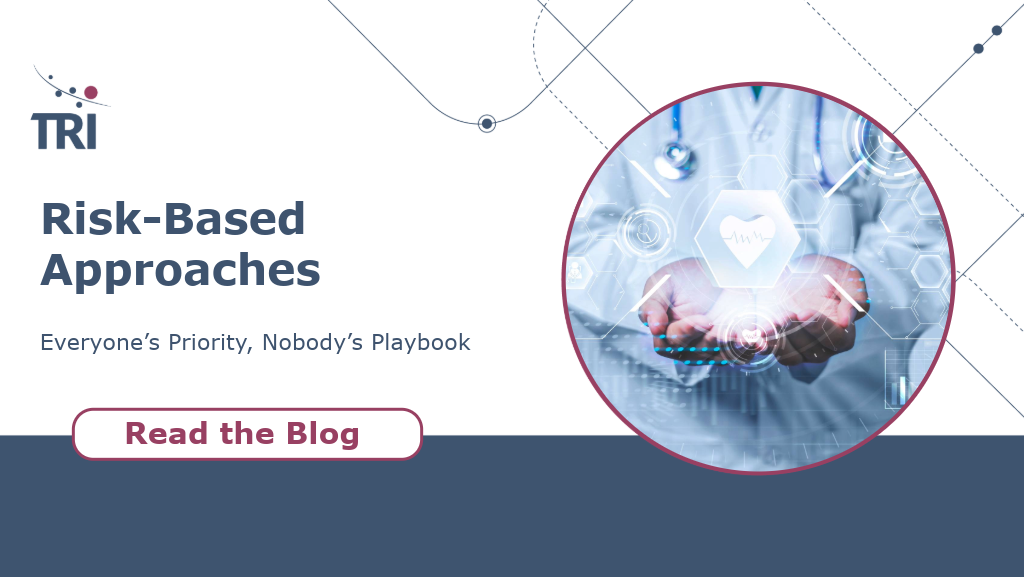Risk-Based Approaches

Everyone’s Priority, Nobody’s Playbook
The 2025 Avoca State of the Industry Report uncovers a striking paradox: risk-based approaches are the top priority for clinical trial stakeholders, for managing risk and identifying potential risks in clinical trials, yet they remain the least understood. This disconnect is a critical barrier to progress in implementing ICH E6(R3) and achieving the efficiencies it promises.
Why Are Risk-Based Approaches So Misunderstood?
On paper, the concept is simple: move away from rigid, one-size-fits-all processes and adopt strategies that are proportionate to risk and fit for purpose, forming the foundation of risk-based quality management. In practice, however, the industry is struggling. According to Avoca’s findings, 44% of organizations rank RBAs as their highest priority, yet many admit they lack clarity on what proportionality really means.
Survey comments reveal the depth of the challenge: “How to measure fit for purpose and proportionality is vague… Great concept but lacking clear expectations and practical implementation.” This uncertainty has real consequences. Without clear guidance, companies risk over-engineering processes, creating unnecessary complexity, and even increasing site burden, the very issues RBAs were designed to solve.
What’s at Stake if We Don’t Get This Right?
When implemented effectively, RBAs can manage risk effectively and transform clinical trials. They can reduce unnecessary monitoring, streamline operations, and improve both data integrity and patient safety. They also have the potential to accelerate timelines and reduce costs, two outcomes every sponsor and CRO is chasing.
Yet, despite FDA guidance encouraging risk-based monitoring for over a decade, many organizations still cling to outdated practices like 100% source data verification. Why? Because change is hard, and without a clear playbook, the safest option often feels like doing what’s always been done.
Education: The Missing Link
The Avoca report makes one thing abundantly clear: education and mindset shift are non-negotiable. It’s not enough to update SOPs; organizations need to invest in training that explains what “fit for purpose” means in real-world scenarios.
Senior leaders must understand how RBAs align with strategic objectives. Operational teams need practical guidance on documenting identified risks and risk assessments for compliance. Sites require clarity on how these changes affect their day-to-day responsibilities. Resources like ICH E6(R3) official guidance and EMA’s GCP Q&A are essential starting points, but they’re not enough on their own. Organizations need role-specific training, case studies, and forums for knowledge sharing.
Where OPRA RBQM Fits In
This is where OPRA RBQM and centralized monitoring come into play, helping teams identify potential risk early. OPRA is designed to operationalize the principles of ICH E6(R3) by providing a centralized, technology-driven platform that simplifies risk assessment, monitoring, and oversight.
Instead of relying on static spreadsheets or fragmented systems, OPRA enables clinical teams to identify critical-to-quality factors, manage risk continuously, and implement targeted monitoring strategies, all within a single, integrated environment.
By embedding RBQM into day-to-day workflows, OPRA helps organizations move beyond theory and into practice. It supports continuous risk review, facilitates cross-functional collaboration, and provides real-time dashboards that make oversight transparent and actionable. In short, OPRA turns the abstract concept of risk-based management into a practical, scalable reality.
Turning Theory into Practice
So, how do we close the gap between ambition and execution? It starts with a comprehensive gap assessment to identify where current processes diverge from ICH E6(R3) expectations. From there, companies should develop role-specific training programs that go beyond theory and focus on practical application.
Finally, change management cannot be an afterthought. Organizations that succeed will be those that provide clear roadmaps and real-world examples to guide teams through the transition.
Why This Matters Now
The industry is still in the early stages of implementation. According to Avoca, only one in five organizations report significant progress toward adopting ICH E6(R3). Yet the urgency is undeniable. As one survey respondent put it: “Changing the way we work is difficult because it impacts not just the sponsor company but also investigator sites and service providers.”
The sooner we tackle this challenge, the sooner we can deliver faster, smarter, and more patient-centric trials. Risk-based approaches are a strategic advantage, but to unlock their full potential, the industry must move beyond buzzwords and start building the playbook.
